Nikon D7200 Review
Nikon D7200 Introduction
The Nikon D7200 is the new flagship APS-C DSLR from Nikon, following the D7100 introduced just 2 years earlier. While the D7100 remains a capable camera today, the D7200 introduces a revised 24 megapixels CMOS sensor and more-sensitive 51-point AF system, in addition to having a greater native sensitivity-range and built-in WiFi with NFC.
The D7200 boasts professional camera features in an advanced cropped-sensor DSLR using its state-of-the-art high-resolution sensor. This sensor covers an ISO 100 to 25600 sensitivity range, plus new Black&White capture up to ISO 102400. It can shoot continuously at 6 FPS and capture full 1080p HD video, both of which have been improved.
The durable magnesium body of the Nikon D7200 includes a large 100% coverage viewfinder and is weather-sealed against dust and moisture. A more efficient processor notably extends battery-life over its predecessor.
This digital camera is designed for efficiency with dual control-dials and over two dozen direct controls. The D7200 also emphasizes video as one of its class-leading capabilities with a sophisticated full-time autofocus system, external stereo sound input, headset output jack and video manual controls.
This review describes the image quality and performance of the Nikon D7200.
Nikon D7200 Features
Sensor
- 24 Megapixels CMOS sensor
- No Anti-Alias Filter
- 1.5X crop-factor, Nikon DX
- ISO 100-25600 normal sensitivity
- Expanded Black&White ISO 51200-102400
- Customizable Auto ISO
- Built-in Dust-Reduction
- JPEG, RAW or JPEG+RAW Output
Exposure
- PASM exposure modes with Program-Shift
- 1/8000s-30s Selectable shutter-speed
- Bulb and Timed mode up to 30 minsRequires optional remote
- Exposure-Compensation, ±5, 1/2 or 1/3 EV steps
- Flash-Compensation, -3...+1, 1/2 or 1/3 EV steps
- Matrix (Multi-Segment), Center-Weighed, Average & Spot metering
- AEB, 2-5 Frames, ±3 EVMax ±2 at 5 frames., 1/3 or 1/2 EV steps
- AE, AE & Flash, Flash, WB, ADL Bracketing
- ½ or 1/3 EV Exposure and ISO steps
- Exposure fine-tuning, ±1 EV, 1/6 EV steps
Focus
- 51-Point autofocus, 15 cross-type, -3 EV sensitivity
- Single-Point, Dynamic-Area or Auto focus-point
- Single-Shot, Continuous or Automatic focus-drive
- Face-Detect & Tracking Live-View autofocus
- Optional Autofocus Fine-Tuning
- Optional AF-Assist lamp
Drive
- 6 FPS Drive, Max 100 JPEG or 18 RAW
- Customizable Self-Timer, 1-9 Shots, 2-20s Start Delay, ½-3s Interval
- Quiet-Shutter with delayed mirror-return
- Mirror-Lock-Up
- Exposure-Delay, 1-3 seconds
- Multiple-Exposure, 2-3 shots, optional auto gain
- Internal-Timer, 1-9 shots, 1-999 times, 1s-24h interval
- Built-in HDR, 4 blending levels
- Dual IR receivers for remote trigger
Images Parameters
- Automatic, Preset, Kelvin and Custom white-balance
- White-Balance fine-tuning, 2-axis, 25-steps
- 7 Built-In Picture Styles
- Automatic or Manual Sharpness, 37 steps
- Automatic or Manual Clarity, 41 steps
- Automatic or Manual Contrast, 25 steps
- Automatic or Manual Saturation, 25 steps
- Manual Brightness, 13 steps
- Manual Hue, 25 steps
- Optional High-ISO Noise Reduction, 3 levels
- Optional Long Shutter Noise Reduction
- Optional In-camera Distortion-Correction
- Optional Active D-Lighting (ADL), 4 levels
Video
- 1920x1080 @ 30 FPS16:9 HD
- 1280x720 @ 60 FPS 16:9 HD
- 1920x1080 @ 60 FPS 16:9 HD with 1.3X Crop
- Time-Lapse with optional Exposure-Smoothing
- Contrast-Detect AF
- Quicktime with H.264 codec
- Two compression qualities
- Wide or Vocal Frequency Response
- Stereo microphone, 20 levels
- Stereo mini-jack input
- Headset mini-jack output
- Optional wind-filter
- Optional sound
Controls
- Dual control-dials
- Combined configurable AE-L/AF-L button
- Optional Easy ISO or EC control
- Independent AEB button
- Modal exposure-mode dial
- Modal drive-mode dial
- Customizable Function button
- Customizable DOF-Preview button
- Live-View button with Video switch
- Direct Video-Recording button
- Focus-Point lock
Viewfinder & Displays
- 100% Coverage viewfinder, 0.94X magnification
- 3.2" LCD, 1.2 Megapixels
- Illuminated top LCD status display
- Editable status display on rear LCD
- Single-Axis Digital-Level
- OVF DOF-Preview
- Optional OVF grid
Body & Construction
- Nikon lens mount
- Weather-sealed, resistant to dust and moisture
- Durable magnesium frame
- Metal tripod mount
- Built-in pop-up flash (GN 12)
- Modeling flash
- Wireless Flash control
- Hot-Shoe for external lighting
- Stereo sound-input mini-jack
- Dual SDXC memory card slots
- Proprietary Lithium-Ion battery
- Built-in WiFi and NFC
- 1080p HDMI output
- USB 2.0 connector
- Optional GPS
The Nikon D7200 is externally identical to its predecessor. Those not familiar with that digital camera should read the Nikon D7100 in-depth review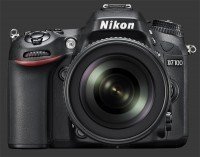
Nikon D7100 first. No need to repeat the same analysis here, so only the performance and conclusion are included in this review. Feature differences are highlighted above in green.
Nikon D7200 Performance - How well does it take pictures?
Ultimately, image-quality makes a camera worth buying. For a digital SLR, image quality greatly depends on the lens used. While color, noise, contrast and exposure are properties of a camera itself, distortion, vignetting and chromatic aberrations are properties of the lens. Sharpness depends on the weakest link. So, a camera cannot capture more details than the lens lets through. Conversely, a lens can transmit more details than a sensor can capture.
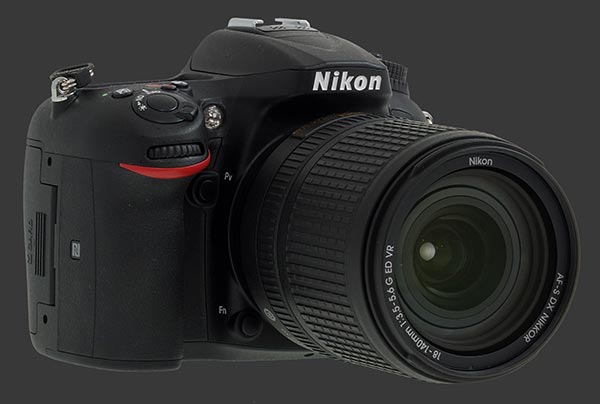
Images from the Nikon D7200 have extremely low noise. Up to and including ISO 400, the output is virtually noise-free, even when viewed at 100% which corresponds to a 60" wide print on most monitors. At ISO 800, noise is barely noticeable. It starts being more easily visible at ISO 1600. ISO 3200 has stronger noise yet shows an impressive retention of details with minimal on all but the largest prints.
Obvious image-noise which destroys fine details and reduces maximum print sizes can be seen at ISO 6400. While ISO 12800 is more noisy, it remains usable for mid-size prints. The top standard sensitivity of ISO 25600 is very noisy yet may be usable for small prints in emergencies.
There are now two Black&White expanded ISO beyond that. ISO 51200 is similar to 25600, except without the color. ISO 102400 though is one stop too far and produces completely blurry images. A setup option controls if these can be selected with the control-dial or not, which prevents accidental use.
It is interesting to compare these results with those of the D7100. These two DSLRs actually delivers very similar performances. Nikon managed to achieve slightly better retention of details by easing on Noise-Reduction which makes the first few stops appear a tad noisier. However, the D7200 gains one extra usable stop at the top of its ISO sensitivity-range.
Even when noise-reduction is turned off, the D7200 applies some smoothing, probably at the sensor-level. This means that ISO 1600 and above show a gradual loss of sharpness with each stop reducing potential print sizes. This follows the increase in noise-levels quite well. So, even if NR was not applied, this digital camera would not be able to produce larger prints anyway.

For a camera without an anti-alias filter, the output is unusually soft. The default sharpness of 2 is truly abysmal. Pushing it to 3.5 yields a great improvement. One could go as far as 4.0 which introduces some slightly noticeable sharpening artifacts. Anything beyond that is full of halos and inverted edge-contrast.
Crucially, image sharpness at 24 MP can be severely limited by the lens. This is clearly the case when using a Nikkor AF-S DX 18-140mm F/3.5-5.6G ED VR which is sold along with the D7200 as kit-lens. The Nikkor AF-S DX 17-55mm F/2.8G ED should produce vastly superior results, so be sure to invest sufficient funds into a high-quality lens if you plan on purchasing a D7200.
Dynamic-range of the D7200 is class-leading, even besting the previous champion despite having 50% smaller pixels. This is where the D7200 improves the most over its predecessor. With Picture-Control set to Neutral, the default tone-curve preserves dynamic-range in JPEG images extremely well. Contrast can be varied in 25 very fine steps. As always, the compromise is that lower contrast is required to capture more dynamic-range.
This DSLR struggles with exposure. Its Matrix metering puts considerably too much emphasis on the center of the frame which leads to frequent over-exposure. The same happens with Center-Weighed metering to a lesser extent. Spot and Average metering work just as expected though. This is regrettably the only real issue with the D7200, just like it is on the D7100.
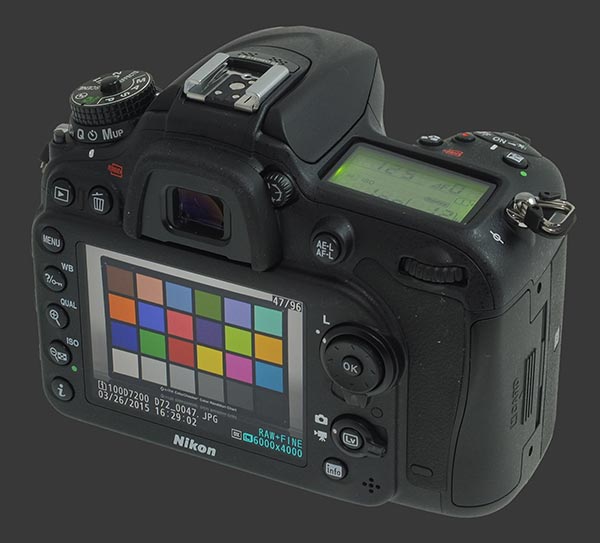
Color rendition of this DSLR is good with a somewhat warm tone by default. Increasing Hue to 1.5 corrects this for the most part, delivering relatively natural colors. Saturation is slightly dull in Neutral. Setting it to +0.5 improves without appear unrealistic. A new image-parameter of the latest generation of Nikon DSLR is Clarity. It enhances details in mid-tones which makes images look crisper. Optimal output is achieved with it set to +1.5.
White-balance is reasonably good. Under most situations, colors come out well balanced. It occasionally leaves a slight yellow-cast and moderate magenta one in low-light. Unless light is very dim, it rarely misses by much. Thankfully, Custom WB works well and is capable of balancing difficult lighting.
Operational speed of the D7200 is exceptional. This DSLR remains responsive under most conditions with only the occasional delay in responding to controls. Its performance is characterized by the following numbers:
- Power On: Instant. Very good.
- Power Off: Barely noticeable. Excellent.
- Autofocus: Below ¼s down to 1s with a slow lens such as the kit one. Highly variable.
- Focus Confirm: Under ¼s for both autofocus and manual focus. Very good.
- Shutter-lag: Nearly instant followed by extremely short black-out. Class-leading.
- Shot-to-Shot Speed: Roughly 1/3s. Good.
- Instant Review: About ¾s. Below average.
- Playback Mode: Immediate. Excellent.
This camera features automatic distortion correction based on pre-programmed lens data. Due to the nature of optical distortion, parts of the captured image get cropped, making precise framing impossible. Enabling lens Distortion Correction slows the D7200 down by adding ½s to the Instant Review delay. At least, it no longer affects continuous shooting buffer-depth.
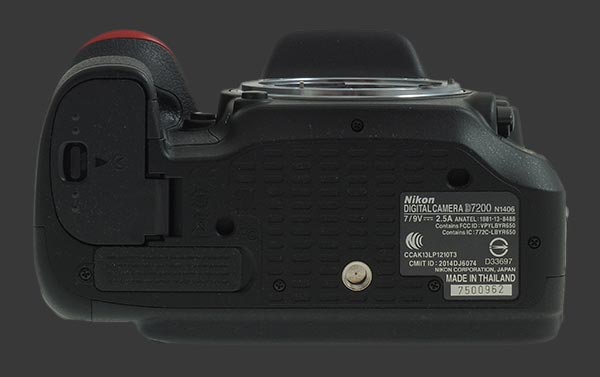
The 51-point autofocus system on the D7200 can be extremely fast yet some lenses slow it down considerably. When focusing manually, the camera instantly confirms focus. The new Phase-Detect AF sensor is sensitive down to -3 EV which very few cameras can manage, making this DSLR particularly well-suited for low-light photography.
Battery-life is excellent, achieving 1100 shots-per-charge according to the CIPA standard. This is improved compared to the D7100 and is enough for more than one day of photography. Keep in mind that video is much more demanding, particularly for full HD encoding which only lasts 80 minutes-per-charge. It is therefore recommended to buy additional batteries if planning to film.
Nikon D7200 Conclusion
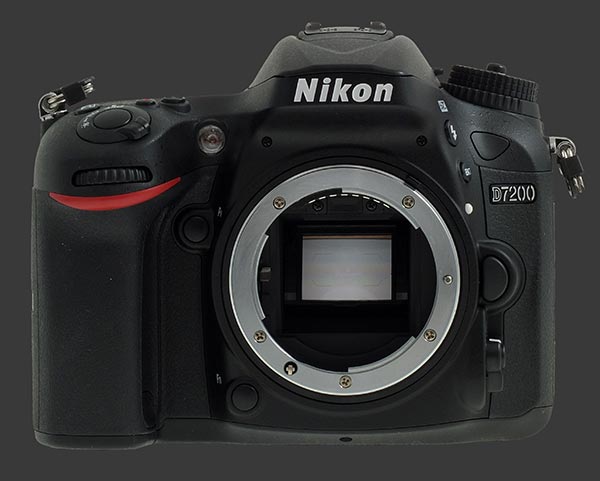
The Nikon D7200 is clearly an improvement over the D7100. While not a huge step ahead, it neatly exceeds its predecessor in terms of dynamic-range and speed, plus a number of other improvements.
Just like its predecessor, the Nikon D7200 delivers an impressive performance in all aspects but one. Image-noise and dynamic-range are top notch, while color and white-balance are completely satisfactory. A high-end lens is required to get really good sharpness out of this digital camera. Exposure is certainly the weak-point here. While correctable with EC, this is nevertheless highly inconvenient to most photographers.
The new 24 MP sensor in the D7200 is easily capable of very large prints of outstanding quality until ISO 400. With a top-quality lens, images should be even sharper considering there is no anti-alias filter in front of the CMOS sensor. From ISO 800 to 3200, beautiful prints are still possible, only not as large. Even ISO 6400 and 12800 remain usable which is an admirable performance considering such a high-resolution.
The speed of this DSLR is excellent. There is still an unusual delay to Instant Review but the D7200 never lags when it counts. Both shutter-lag and black-out time are top-notch which makes this camera well-suited for action photography. A maximum buffer for 100 JPEG images or 18 RAW files at 6 FPS greatly helps too.
 |
Please Support Neocamera
All information on Neocamera is provided free of charge yet running this website is a huge endeavor. Purchases made via affiliate links found throughout the site help keep it running and up-to-date. There is no additional cost to you, so please consider buying via these links to our affilates:
If you found any information on this site valuable and did not purchase via our affiliate links, please considering donating via PayPal:
Any amount will be greatly appreaciated. Thank you for your support!
Nikon D7200 Highlights

Sensor-Size: 24 x 16mm

Actual size when viewed at 100 DPI
| 24 Megapixels DSLR | ISO 100-25600 |
| Nikon F Mount 1.5X FLM | Shutter 1/8000-30s |
| 100% Coverage Large Viewfinder | Full manual controls, including Manual Focus |
| 1 Axis Digital Level | Custom white-balance with 2 axis fine-tuning |
| Weatherproof | Spot-Metering |
| Built-in Dust Reduction | Hot-Shoe |
| 6 FPS Drive, 100 Images | Stereo audio input |
| 1920x1080 @ 60 FPS Video Recording | Lithium-Ion Battery |
| 3.2" LCD 1.2 Megapixels | Secure Digital Extended Capacity x 2 |
Updates
2025.01.18

Fujifilm GFX 2025 Lens Roundup
Lens Review roundup of Fujifilm GFX Medium-Format lenses. Quality, performance and handling of the GF20-35mm F/4R WR, GF30mm F/3.5 Tilt-Shift and the GF55mm F/1.7.
2024.11.18

Best 2024 Photography Gifts for Every Budget
Great gifts for photographers and photo enthusiasts selected for every budget among the best products of 2024.
2024.08.07

Eye Protection Tips for Professional Photographers
The four main considerations for professional photographers regarding eyewear.
2024.07.14

Fujifilm X100VI Review
Flagship fixed-lens compact digital camera with a 40 MP sensor and Image-Stabilization, a first for the series. Retro design featuring dual control-dials, plus direct ISO, Shutter-Speed and EC dials. Its hybrid viewfinder can switch between EVF and OVF mode.
2024.05.09

Fujifilm GFX100 II Review
Flagship 102 Megapixels Medium-Format Mirrorless Digital Camera with 8-Stop 5-Axis IBIS, 8 FPS Drive, 8K Video and 400 MP Super-Resolution capture in a weatherproof and freezeproof body with dual control-dials and dual memory-card slots.
2024.04.03

Fujifilm X-T5 Review
Newest Fujifilm flagship boasting a 40 MP APS-C sensor, 5-axis IBIS with 7-stop efficiency, 15 FPS continuous drive, 6.2K Video capture, dual control-dials and dual SDXC UHS-II slots in a sturdy weatherproof and freezeproof body.
2023.11.20

Best Digital Cameras of 2023
Find out which are the Best Digital Cameras of 2023. All the new Mirrorless Digital Cameras from entry-level to high-end professional.
2023.07.10

Fujifilm X-H2 Review
40 Megapixels APS-C Hybrid Mirrorless Digital Camera with 7-stop IBIS. Fastest shutter ever and 8K video capture. Large builtin EVF with 0.8X magnification and 5.8 MP, plus an Eye-Start Sensor. Packed with features and large number of controls in a weatherproof and freezeproof body.
2023.05.07

Sony FE 20-70mm F/4G Review
Review of the unique Sony FE 20-70mm F/4G lens. The optical zoom of this lens spans ultra-wide-angle and medium focal-length coverage, making it one of the most versatile Full-Frame lenses on the market.
2023.01.15

Huion Inspiroy Dial 2 Review
Review of the Huion Inspiroy Dial 2 tablet, a medium sized drawing surface with dual dials and customizable buttons. Connects via USB-C or Bluetooth 5.0 with Windows, Linux and Android support.
2022.12.08

How to Pack for a Photo Trip
Find out how to pack for a travel photography trip, carry your gear safely while meeting airline regulations.
2022.11.13

Best Digital Cameras of 2022
The best digital cameras of 2022. A short list of the most outstanding models in their respective categories. Choose one for yourself or as a gift.













